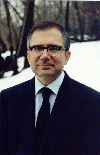During the 1980s, Psychophysical Research Laboratories (PRL) developed a package called PsiLab // to test psychic functioning using the Apple II series of computers.
The package included an electronic random number generator (RNG) on a circuit board that fit into an Apple II slot. The RNG was a modified version of one built by Dutch physicist Dick Bierman.
PsiLab // also included software to test the randomness of RNGs, computer games that used RNG output, and utilities for analysis. The PsiLab // manual (126 pages) gave considerable detail, but a very limited number of copies—perhaps no more than two dozen—were produced.
The PsiLab // manual is now online in PDF format. Two versions are available:
Click here for PsiLab // -- Searchable PDF (7.3 MB)
Click here for PsiLab // -- Nonsearchable PDF (3.1 MB)
The manual was cited in a number of journal articles reporting both laboratory-based research (e.g., Berger 1988; Don, McDonough, & Warren 1992; Honorton 1987) and field studies (e.g., Maher & Hansen 1992; Maher & Hansen 1995). Also, a number of researchers made use of the random analysis software and the methods for verifying adequate functioning of RNGs (e.g., Palmer & Kramer 1987; Vassy 1990).
PRL was headed by Charles Honorton, and it carried out research from 1979 to 1989 in Princeton, New Jersey. It focused on two primary areas: ESP under ganzfeld conditions and psi effects on electronic RNGs. For more information on PRL, see Broughton (1991, pp. 105-114; 1993), Hansen (2001, pp. 195-196, 206), and especially Schechter (1993). The 1993 articles by Broughton and Schechter were reprinted in Rao (1994).
References
Berger, Rick E. (1988). Psi Effects Without Real-Time Feedback. Journal of Parapsychology, Vol. 52, pp. 1-27.
Broughton, Richard S. (1991). Parapsychology: The Controversial Science. New York, NY: Ballantine Books.
Broughton, Richard S. (1993). A Craftsman and His Tools: The New Technology. Journal of Parapsychology, Vol. 57, pp. 111-127.
Don, Norman S.; McDonough, Bruce E.; & Warren, Charles A. (1992). Psi Testing of a Controversial Psychic Under Controlled Conditions. Journal of Parapsychology, Vol. 56, pp. 87-96.
Hansen, George P. (2001). The Trickster and the Paranormal. Philadelphia, PA: Xlibris.
Honorton, Charles. (1987). Precognition and Real-Time ESP Performance in a Computer Task With an Exceptional Subject. Journal of Parapsychology, Vol. 51, pp. 291-320.
Maher, Michaeleen C. & Hansen, George P. (1992). Quantitative Investigation of a Reported Haunting Using Several Detection Techniques. Journal of the American Society for Psychical Research, Vol. 86, pp. 347-374.
Maher, Michaeleen C. & Hansen, George P. (1995). Quantitative Investigation of a “Haunted Castle” in New Jersey. Journal of the American Society for Psychical Research, Vol. 89, pp. 19-50.
Palmer, John & Kramer, Wim. (1987). Release of Effort in RNG PK: An Attempted Replication and Extension. Journal of Parapsychology, Vol. 51, pp. 125-136.
Rao, K. Ramakrishna. (1994). Charles Honorton and the Impoverished State of Skepticism: Essays on a Parapsychological Pioneer. Jefferson, NC: McFarland & Company, Inc.
Schechter, Ephraim I. (1993). Psychophysical Research Laboratories. Journal of Parapsychology, Vol. 57, pp. 67-82.
Vassy, Zoltan. (1990). Experimental Study of Precognitive Timing: Indications of a Radically Noncausal Operation. Journal of Parapsychology, Vol. 54, pp. 299-320.
Subscribe to:
Post Comments (Atom)


No comments:
Post a Comment